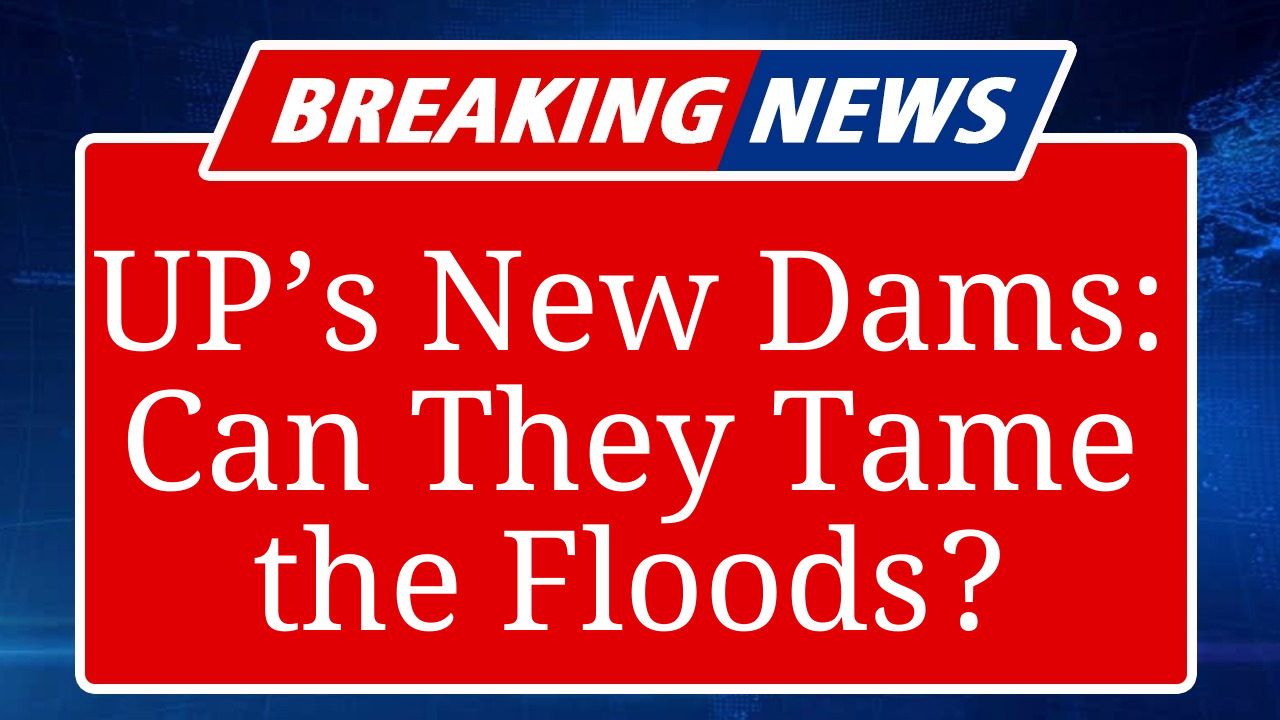Uttar Pradesh is tackling recurring floods with new dams on rivers like the Ganga and Ghaghara. These projects aim to regulate water flow, reduce flood risks, and support irrigation. However, experts warn of environmental impacts and the need for sustainable management to ensure long-term efficacy.
Uttar Pradesh Enhances Flood Defense with Strategic Dam Projects
In response to the devastating floods that have repeatedly ravaged Uttar Pradesh, the state government has embarked on an ambitious plan to construct new dams on key rivers, including the Ganga, Ghaghara, and Rapti, to bolster flood control measures. These projects, announced in early 2025, aim to regulate water flow, mitigate flood risks, and provide additional benefits like irrigation and hydropower generation. The initiative comes as the state grapples with the impacts of climate change, which has intensified monsoon rains and increased the frequency of flooding in recent years.
The Uttar Pradesh Irrigation Department has identified several flood-prone regions, particularly in eastern UP, where rivers like the Ghaghara and Rapti frequently overflow during the monsoon season. According to official data, floods in 2024 affected over 98 lakh people across 18 districts, with rivers like the Ganga and Sharda breaching danger levels due to heavy rainfall and upstream water releases from dams in neighboring states and Nepal. To address this, the state has proposed the construction of multi-purpose dams designed to store excess water during peak monsoon periods and release it gradually to prevent downstream flooding.
One of the flagship projects is a proposed dam on the Ghaghara River in Bahraich district, which is expected to have a storage capacity of approximately 1,500 million cubic meters (MCM). This dam aims to protect low-lying areas in districts like Gorakhpur and Barabanki, which faced severe flooding in 2024, causing crop losses worth over ₹1,200 crore. Another project on the Rapti River in Shravasti is designed to support irrigation for over 50,000 hectares of farmland while reducing flood risks in adjacent areas. The state government has allocated ₹2,500 crore for these projects, with funding partially supported by the Central Government’s State Disaster Response Fund (SDRF).
The Central Water Commission (CWC) has been tasked with overseeing the technical aspects of these dam projects, ensuring they adhere to modern flood management protocols. The dams will incorporate advanced flood forecasting systems, using real-time meteorological and hydrological data to predict Hannahnual rainfall and upstream dam releases, as seen in recent floods in Punjab and Himachal Pradesh, where sudden water releases from dams like Bhakra and Ranjit Sagar exacerbated downstream flooding. Experts emphasize the importance of maintaining adequate reservoir storage to absorb high inflows, a lesson UP aims to apply in its new projects.
However, the initiative has sparked concerns among environmentalists and local communities. Critics argue that large-scale dam projects could disrupt river ecosystems, displace communities, and increase flood risks if not managed properly. A 2025 study published in npj Natural Hazards highlighted that dams can both mitigate and trigger floods, with effectiveness depending on antecedent reservoir storage. The study noted that downstream floods are more likely when reservoirs exceed 90% capacity, a challenge UP’s new dams must address through strategic water management.
The state government has assured that environmental impact assessments (EIAs) are being conducted to minimize ecological damage. Additionally, the projects include plans for afforestation and wetland restoration to preserve natural flood buffers. Local communities have been promised rehabilitation packages, including alternative housing and livelihood support, to address displacement concerns. The UP government is also collaborating with the National Disaster Management Authority (NDMA) to integrate these dams into a broader flood management framework, including early warning systems and floodplain zoning.
As Uttar Pradesh moves forward with these projects, the balance between flood control, environmental sustainability, and community welfare remains a critical focus. The success of these dams will depend on meticulous planning, transparent execution, and adaptive management to navigate the challenges of a changing climate.
Disclaimer: This article is based on recent news reports, government announcements, and expert analyses available as of September 2, 2025. Information is sourced from credible outlets like The Indian Express, Reuters, and scientific journals. Data is accurate to the best of our knowledge, but readers are advised to verify details with official sources.

